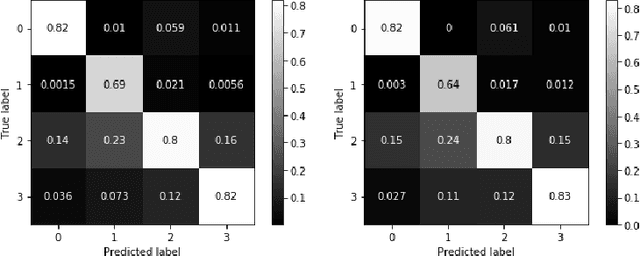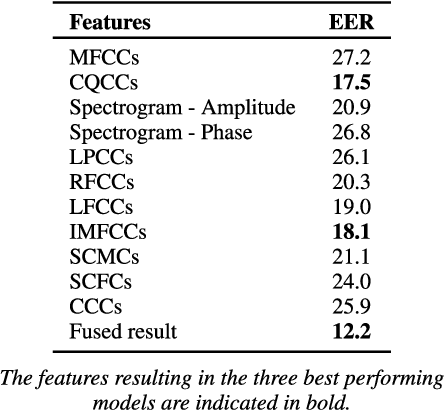Balamurali BT
A dataset and classification model for Malay, Hindi, Tamil and Chinese music
Sep 15, 2020

Abstract:In this paper we present a new dataset, with musical excepts from the three main ethnic groups in Singapore: Chinese, Malay and Indian (both Hindi and Tamil). We use this new dataset to train different classification models to distinguish the origin of the music in terms of these ethnic groups. The classification models were optimized by exploring the use of different musical features as the input. Both high level features, i.e., musically meaningful features, as well as low level features, i.e., spectrogram based features, were extracted from the audio files so as to optimize the performance of the different classification models.
Towards robust audio spoofing detection: a detailed comparison of traditional and learned features
May 28, 2019



Abstract:Automatic speaker verification, like every other biometric system, is vulnerable to spoofing attacks. Using only a few minutes of recorded voice of a genuine client of a speaker verification system, attackers can develop a variety of spoofing attacks that might trick such systems. Detecting these attacks using the audio cues present in the recordings is an important challenge. Most existing spoofing detection systems depend on knowing the used spoofing technique. With this research, we aim at overcoming this limitation, by examining robust audio features, both traditional and those learned through an autoencoder, that are generalizable over different types of replay spoofing. Furthermore, we provide a detailed account of all the steps necessary in setting up state-of-the-art audio feature detection, pre-, and postprocessing, such that the (non-audio expert) machine learning researcher can implement such systems. Finally, we evaluate the performance of our robust replay speaker detection system with a wide variety and different combinations of both extracted and machine learned audio features on the `out in the wild' ASVspoof 2017 dataset. This dataset contains a variety of new spoofing configurations. Since our focus is on examining which features will ensure robustness, we base our system on a traditional Gaussian Mixture Model-Universal Background Model. We then systematically investigate the relative contribution of each feature set. The fused models, based on both the known audio features and the machine learned features respectively, have a comparable performance with an Equal Error Rate (EER) of 12. The final best performing model, which obtains an EER of 10.8, is a hybrid model that contains both known and machine learned features, thus revealing the importance of incorporating both types of features when developing a robust spoofing prediction model.
 Add to Chrome
Add to Chrome Add to Firefox
Add to Firefox Add to Edge
Add to Edge